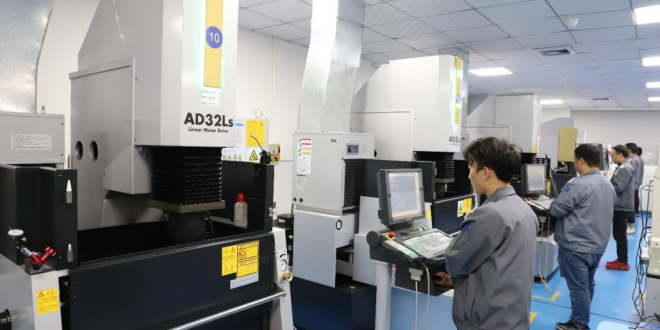Plastic injection molding involves filling a stainless steel mold with molten plastic, which subsequently hardens to produce the finished product. This type of production allows for the economical mass production of items with tightly controlled dimensions. Plastic injection molding projects often include the mass production of hundreds of thousands, if not millions, of individual components.
Setup is more expensive than with other types of machining. However, economies of scale become worthwhile when produced in large quantities. As a bonus, the procedure generates almost little waste, and any excess thermoplastic may be reintroduced into the manufacturing process.
Among plastic molding techniques, injection molding has the widest range of applications. Injection molding machines come in various sizes and pressure ratings, and manufacturers may choose from a wide variety of plastic resins and additives to tailor the finished product’s mechanical qualities. Injection molding may be used to make everything from huge vehicle parts to tiny, precise medical components, depending on the machine type and material choice.
Steel mold fabrication for plastic injection molding is costly, but the method’s cheap cost-per-part makes up for it. Injection molding has become one of the most common manufacturing methods because of its low component cost, design flexibility, diversity of material and finishing possibilities, and extensive customization procedures.
Plastic Injection Molding: Choosing the Right Material
When it comes to the final use of a component, choosing the right resin is crucial. As a result of recent developments in polymer science, a large variety of plastic resins have become available, allowing for a wide range of mechanical and aesthetic features in molded products.
When selecting a plastic resin, keep in mind the following five criteria:
- Design considerations for the part’s visual appeal (color, texture, transparency)
- Specifications for the required level of durability, stress, and flexibility/rigidity of the component
- Resistances Needed (temperature, chemical, weather, etc.)
- The Necessity of Regulation
Making Plastic Injection Molds
In plastic injection molding, the most time-consuming and money-consuming step is creating the molds. For these instruments to work properly, skilled design engineers and toolmakers must apply high accuracy and careful thought. Many components may be lost if the mold were flawed. Since this is the case, ensuring high-quality standards and conducting thorough testing before going into mass manufacturing is essential.
Conclusion
Making the mold is the most costly part of plastic injection molding, but a high-quality, precise mold may be used for years and even millions of times. When it comes to plastics, ABERY is your go-to manufacturer for injection molds and injection components. I hope this post was helpful.
 TECHGUIDANCES
TECHGUIDANCES




